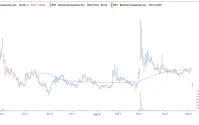We’re all staring at the shiny objects. We see the large language models conjuring poetry, the generative AI creating impossible worlds, and we’re rightly amazed. But I’ve been telling everyone who will listen that we’re looking in the wrong direction. The real revolution, the tectonic shift that will define the next century, isn't happening on our screens. It’s happening behind our walls, under our streets, in a sprawling, humming, and frankly, aging network we all take for granted: the electrical grid.
This isn't just a network of wires anymore. It's rapidly becoming the circulatory system for the digital age, and it's about to be put under a strain it was never designed for. The colossal energy appetite of AI data centers is a known secret in my field, a coming tidal wave that most of the public hasn't yet grasped. The rate at which we need more power is outpacing anything we’ve ever seen. So, the billion-dollar question isn't "Who will build the next great AI?" but "Who can possibly build the grid to power it all?"
I’ve been looking for an answer, and I think I found it in the most unexpected place: the grime and chaos of the New York City subway.
The Architect of the Unseen
When I first read about Sally Librera, the president of National Grid’s New York business, I honestly just sat back in my chair, speechless. Her resume doesn't read like a typical utility executive. She didn't spend 30 years climbing the energy sector ladder. Instead, she was the first woman to run the NYC subway system, a sprawling, 24/7 beast of steel, electricity, and six million daily human stories. She was in charge of a team of 30,000, responsible for the pulsing veins of North America's largest city.
Think about that for a second. The subway isn't just a machine; it's a living organism. It’s a complex system where human behavior, mechanical reliability, and data analytics collide every single second. To not only manage it but to turn it around—cutting delays in half and improving performance on every single line—requires a mind that sees things differently. It requires a leader who understands flow, not just power.
What really struck me was her story about a personal turning point. Early in her career, trying to fill the shoes of a predecessor, she found herself failing. Why? Because she was trying to be a bad imitation of him instead of a great version of herself. "I had to figure out how to take what I’ve done, my value, and recast this role in a way that made me better at it," she said. This is the kind of breakthrough that reminds me why I got into this field in the first place. It’s not about technology; it’s about the human insight that unlocks its potential. She brought in data, analytics, and a new way of communicating, blending her unique skills with the deep operational experience of her teams. She didn’t just manage the system; she evolved it.

From Human Flow to Electron Flow
Now, she’s been tasked with running the energy infrastructure for 4.2 million New Yorkers at `National Grid NY`. And at first glance, moving people and moving electrons might seem worlds apart. But are they really?
As Librera herself noted, the core challenges are identical. You have massive, aging infrastructure. You have immense pressure on cost and affordability—every `National Grid bill` is a reminder of that. And you have a non-negotiable, 24/7 responsibility to keep people safe. The recruiter who poached her from the transit world laid it out perfectly: it’s the same job, just with a different commodity.
This is the paradigm shift. The person we need to build the grid of the future isn't necessarily the one who knows the most about transformers, but the one who knows the most about complex, dynamic systems. And the system is about to get infinitely more complex. Librera says it herself: "AI is having a massive effect on the energy industry… the rate at which the need for energy is growing is so significant." This demand is so explosive that the old ways of building things out simply won't work—it means the gap between the power we have and the power we need for our AI-driven future is widening by the day and we need a fundamentally new approach to close it.
This is where her unique experience becomes a superpower. How do you integrate new, decentralized energy sources? How do you use data and AI to predict demand and prevent outages before they happen? How do you manage the expectations of millions of customers, ensuring service is both reliable and affordable? It’s the same set of problems as untangling a rush-hour jam at Times Square, just on a different scale.
This isn’t just some abstract theory. We're already seeing hints of this steady-handed, forward-looking management. For instance, while headlines scream about rising costs, in Massachusetts, the Mass. utilities regulator approves rate changes for some home-heating gas customers, a move that will see some `National Grid gas` customers paying slightly less this winter. The company’s financials appear stable, with `National Grid stock` (NGG) earning a "Buy" rating from analysts. This is the foundation you need: a company that can manage the day-to-day so effectively that it frees up its visionary leader to tackle the decade-to-decade. This is the kind of work that creates long-term `National Grid careers`, building a workforce with a "passion for service" ready for the next challenge.
The Human Code in the Machine's Grid
Let's be clear. The challenge ahead is monumental. It’s akin to building the interstate highway system in the 1950s—a foundational project that will unlock decades of unforeseen innovation. But what I find so profoundly optimistic is that the person at the helm of a key part of this build-out isn't a traditionalist. She's a systems thinker, a communicator, a risk-taker who learned her most valuable lessons by managing the beautiful, messy, unpredictable flow of humanity. That’s the secret sauce. To build the infrastructure for our machines, it turns out we need someone who understands people first.









